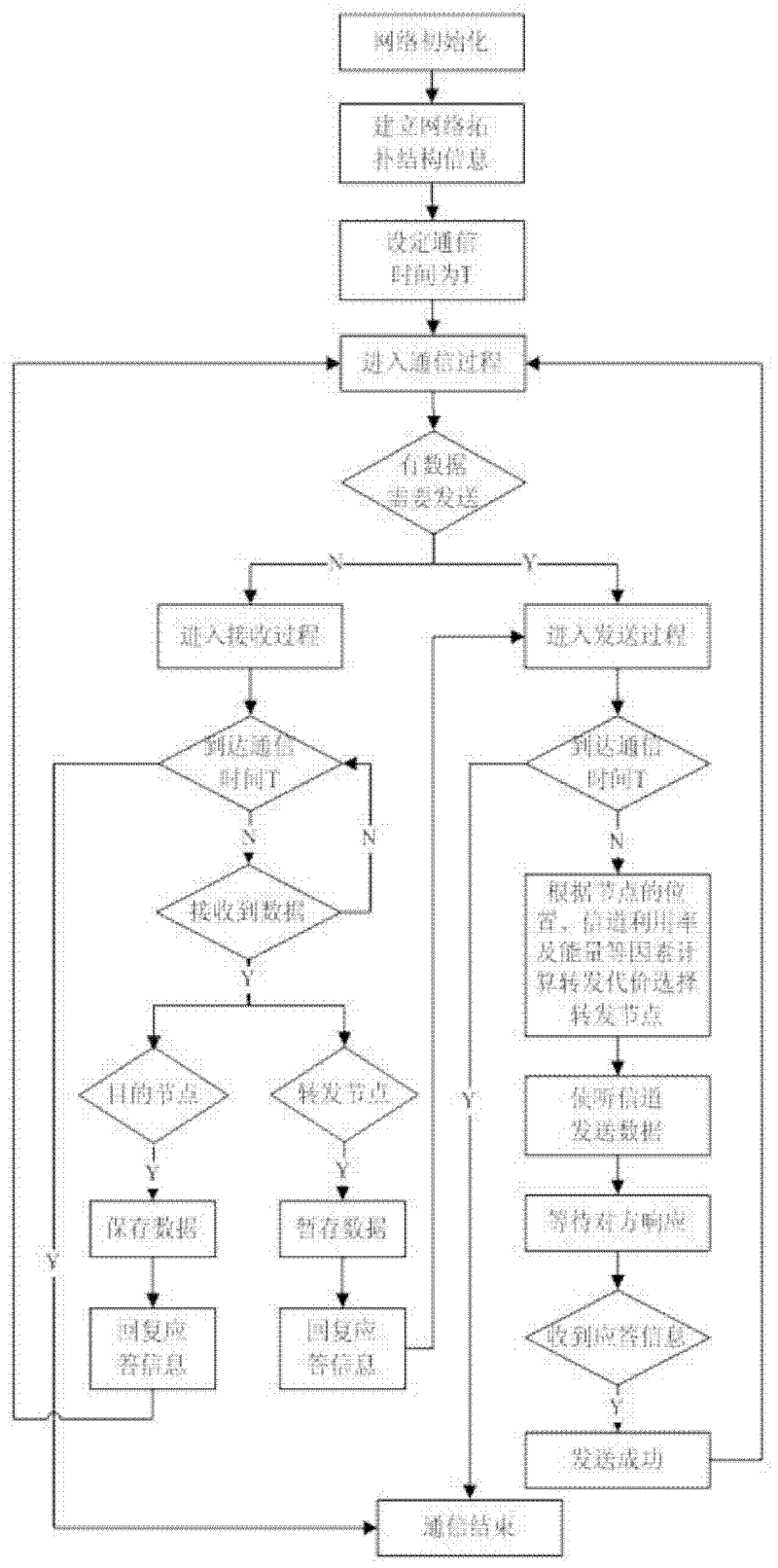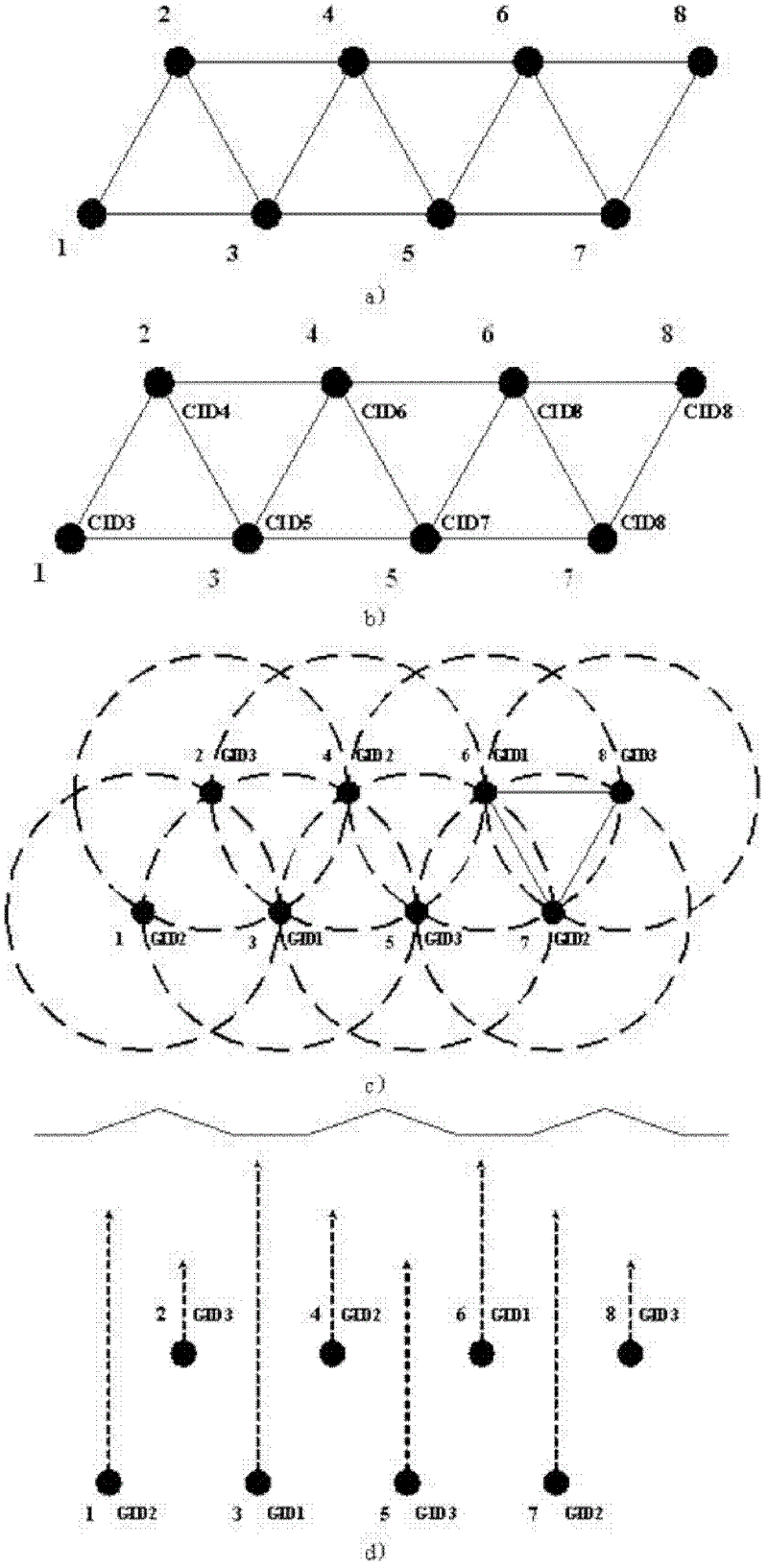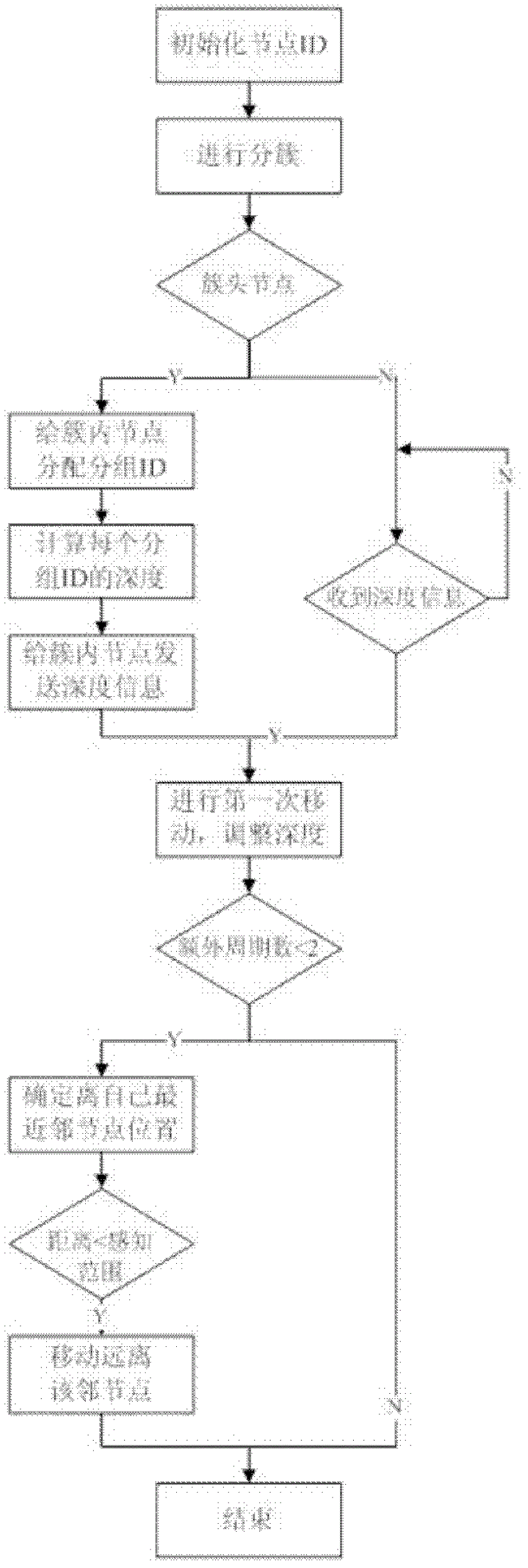Distributed routing protocol method for three-dimensional underwater acoustic sensor networks
An underwater acoustic sensor and routing protocol technology, applied in the field of routing protocols and distributed routing protocols, can solve problems such as exhaustion of energy, shortening of network survival time, and increase of energy consumption of information packets
- Summary
- Abstract
- Description
- Claims
- Application Information
AI Technical Summary
Problems solved by technology
Method used
Image
Examples
Embodiment Construction
[0076] see figure 1 , assuming that each node knows its own geographic location, and the channel is bidirectionally symmetrical, when data needs to be forwarded, the forwarding cost is calculated based on the existing network topology and factors such as the node's position, channel utilization, and energy Select the forwarding node, if the forwarding node is the destination node, the data will be sent directly to the destination node, and the data sending process ends; if the forwarding node is not the destination node, the data will be sent to the forwarding node, after the forwarding node receives the data , continue to calculate the forwarding cost according to the node's position, channel utilization rate, energy and other factors to select its own forwarding node until the data is finally sent to the destination node, and the data sending process ends.
[0077] Specifically, follow the steps below:
[0078] 1) The network is initialized, and the distributed node deploym...
PUM
 Login to View More
Login to View More Abstract
Description
Claims
Application Information
 Login to View More
Login to View More - R&D
- Intellectual Property
- Life Sciences
- Materials
- Tech Scout
- Unparalleled Data Quality
- Higher Quality Content
- 60% Fewer Hallucinations
Browse by: Latest US Patents, China's latest patents, Technical Efficacy Thesaurus, Application Domain, Technology Topic, Popular Technical Reports.
© 2025 PatSnap. All rights reserved.Legal|Privacy policy|Modern Slavery Act Transparency Statement|Sitemap|About US| Contact US: help@patsnap.com



